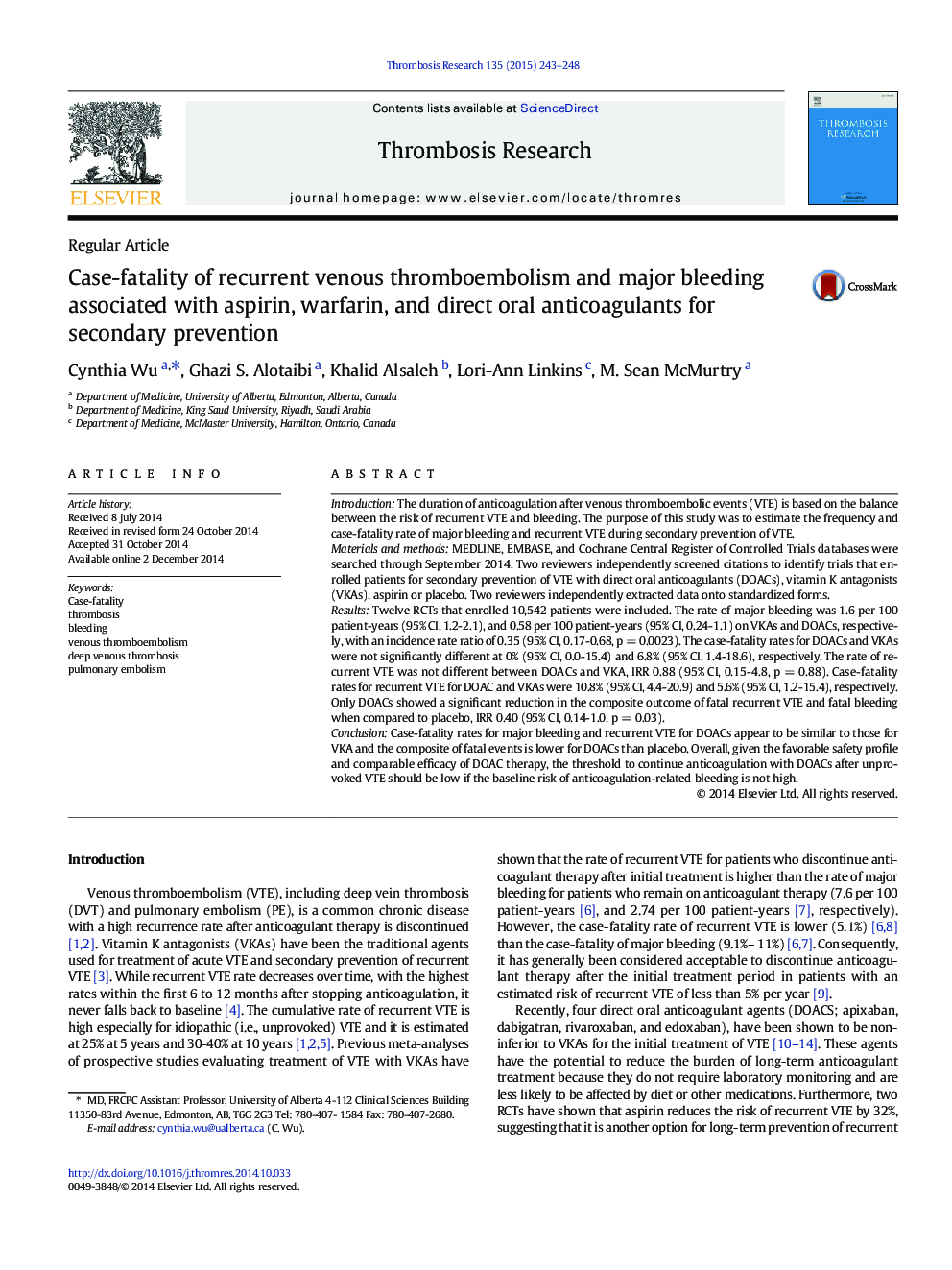| کد مقاله | کد نشریه | سال انتشار | مقاله انگلیسی | نسخه تمام متن |
|---|---|---|---|---|
| 6000699 | 1182936 | 2015 | 6 صفحه PDF | دانلود رایگان |

- Case fatality is the proportion of deaths within a designated population of "cases"
- Direct oral anticoagulants are currently used for VTE secondary prevention
- Case-fatality rates for major bleeding and recurrent VTE for DOACs appear to be low
IntroductionThe duration of anticoagulation after venous thromboembolic events (VTE) is based on the balance between the risk of recurrent VTE and bleeding. The purpose of this study was to estimate the frequency and case-fatality rate of major bleeding and recurrent VTE during secondary prevention of VTE.Materials and methodsMEDLINE, EMBASE, and Cochrane Central Register of Controlled Trials databases were searched through September 2014. Two reviewers independently screened citations to identify trials that enrolled patients for secondary prevention of VTE with direct oral anticoagulants (DOACs), vitamin K antagonists (VKAs), aspirin or placebo. Two reviewers independently extracted data onto standardized forms.ResultsTwelve RCTs that enrolled 10,542 patients were included. The rate of major bleeding was 1.6 per 100 patient-years (95% CI, 1.2-2.1), and 0.58 per 100 patient-years (95% CI, 0.24-1.1) on VKAs and DOACs, respectively, with an incidence rate ratio of 0.35 (95% CI, 0.17-0.68, p = 0.0023). The case-fatality rates for DOACs and VKAs were not significantly different at 0% (95% CI, 0.0-15.4) and 6.8% (95% CI, 1.4-18.6), respectively. The rate of recurrent VTE was not different between DOACs and VKA, IRR 0.88 (95% CI, 0.15-4.8, p = 0.88). Case-fatality rates for recurrent VTE for DOAC and VKAs were 10.8% (95% CI, 4.4-20.9) and 5.6% (95% CI, 1.2-15.4), respectively. Only DOACs showed a significant reduction in the composite outcome of fatal recurrent VTE and fatal bleeding when compared to placebo, IRR 0.40 (95% CI, 0.14-1.0, p = 0.03).ConclusionCase-fatality rates for major bleeding and recurrent VTE for DOACs appear to be similar to those for VKA and the composite of fatal events is lower for DOACs than placebo. Overall, given the favorable safety profile and comparable efficacy of DOAC therapy, the threshold to continue anticoagulation with DOACs after unprovoked VTE should be low if the baseline risk of anticoagulation-related bleeding is not high.
Journal: Thrombosis Research - Volume 135, Issue 2, February 2015, Pages 243-248